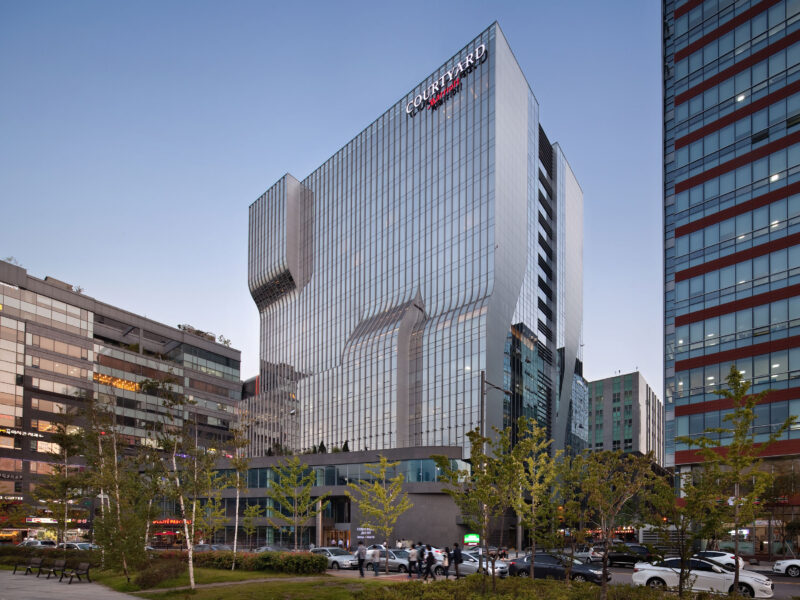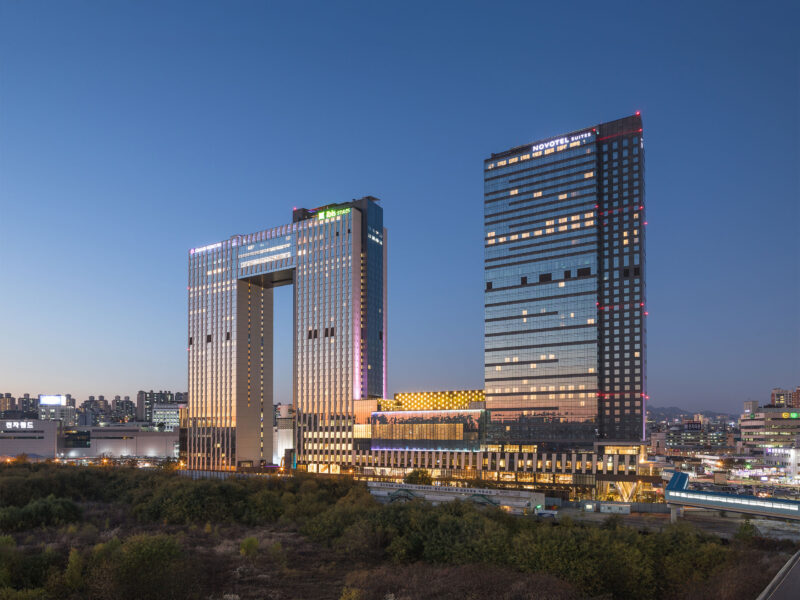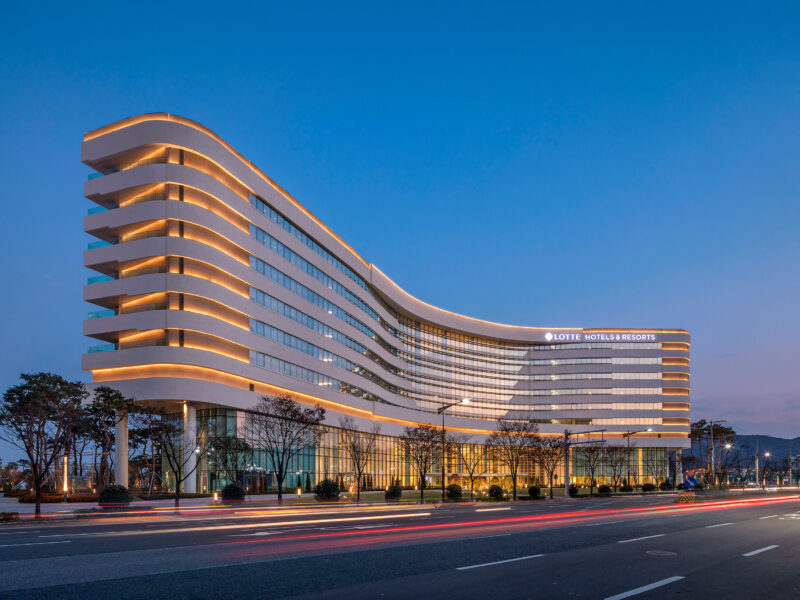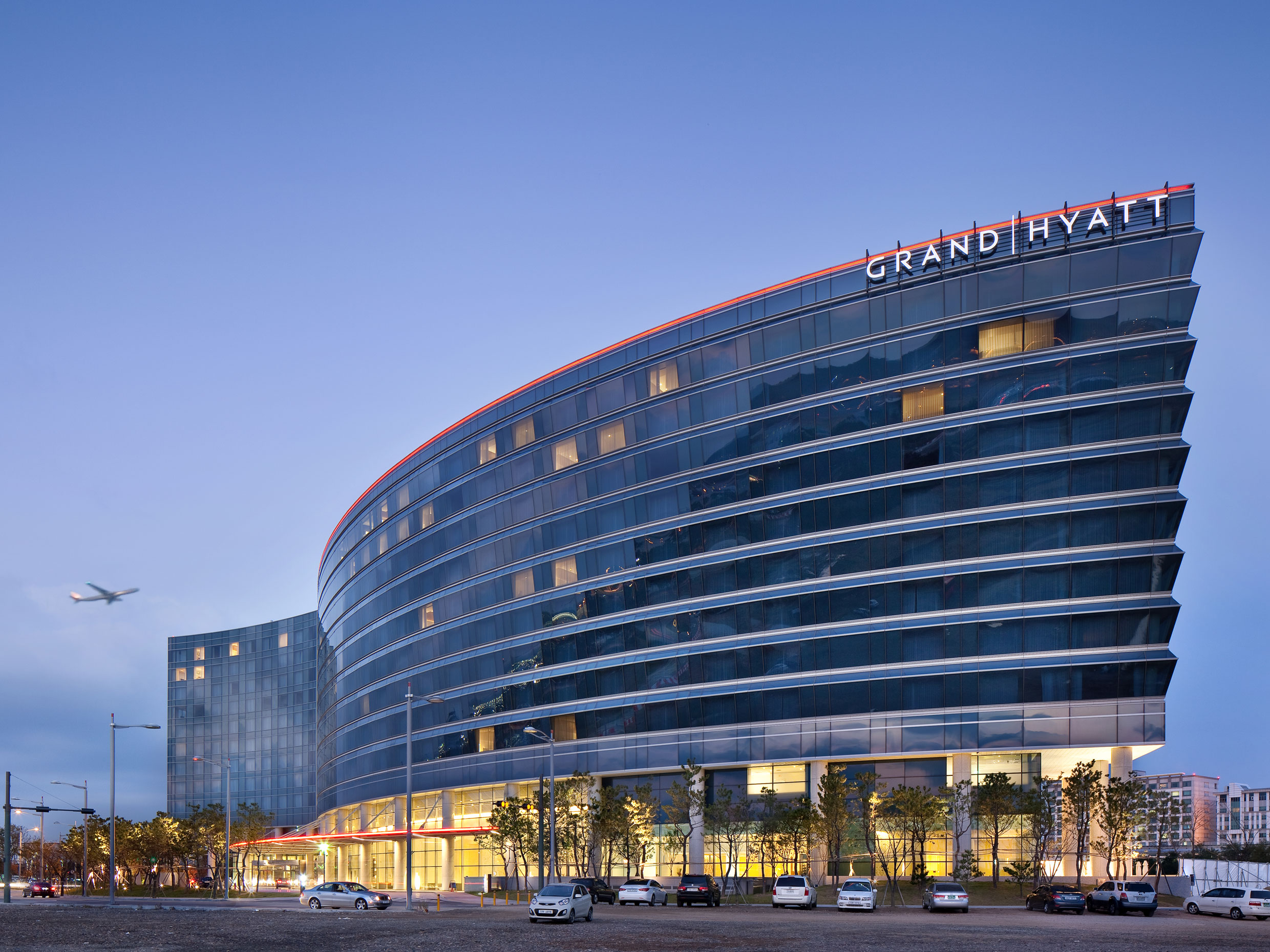
The Grand Hyatt Incheon is a project initiated to enhance the competitiveness of Incheon International Airport and to support the successful hosting of the 2014 Asian Games. Located on reclaimed land between Yeongjongdo and Yongyudo, it is situated adjacent to H1 Hotel (Hyatt Regency Incheon) and is also known as H2 Hotel. Its distinctive exterior emphasizes horizontality, designed with BIM technology, which enabled real-time communication and precise information sharing with overseas partners regarding design intent and project progress.
The design of guestroom areas was inspired by an aircraft wing’s airflow and wave motion, while the service area’s podium was planned considering operation integrated with H1 Hotel, including BOH (Back of House) and circulation routes. The lobby serves as a multipurpose space for relaxation, conversation, exhibitions, and meetings, shaping the overall hotel aesthetic. The front desk was deliberately positioned with a slight angle from the main entrance to improve guests’ comfort during entry. Because the banquet hall’s area remains relatively unchanged, layout planning focused on appropriate table sizes and arrangements based on different capacity requirements, reflecting detailed analysis of guests’ primary purposes and usage patterns. Additionally, the design ensured seamless connectivity with auxiliary facilities.

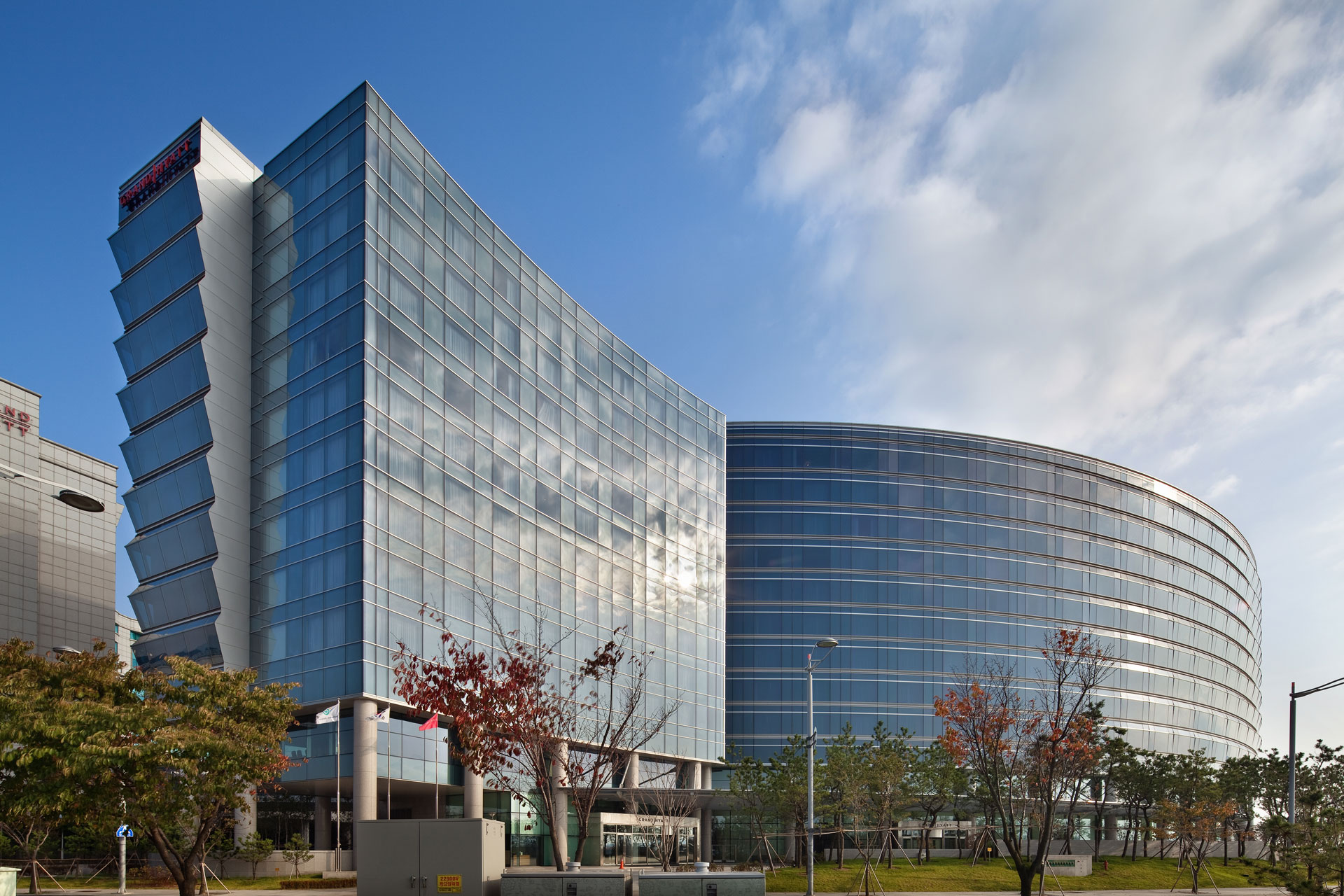

-
Status
Completed
-
Client
Korean Air Lines
-
Program
Hospitality
-
Design Year
2011
-
Completion Year
2017
-
Location
Jung-gu, Incheon
-
Site area
16,348.00m2
-
Gross Floor Area
71,969.00m2
-
Building Area
9,807.00m2
-
Number of Levels
B2, 11F
-
Design
-
Partner
Gensler
The Grand Hyatt Incheon is a project initiated to enhance the competitiveness of Incheon International Airport and to support the successful hosting of the 2014 Asian Games. Located on reclaimed land between Yeongjongdo and Yongyudo, it is situated adjacent to H1 Hotel (Hyatt Regency Incheon) and is also known as H2 Hotel. Its distinctive exterior emphasizes horizontality, designed with BIM technology, which enabled real-time communication and precise information sharing with overseas partners regarding design intent and project progress.
The design of guestroom areas was inspired by an aircraft wing’s airflow and wave motion, while the service area’s podium was planned considering operation integrated with H1 Hotel, including BOH (Back of House) and circulation routes. The lobby serves as a multipurpose space for relaxation, conversation, exhibitions, and meetings, shaping the overall hotel aesthetic. The front desk was deliberately positioned with a slight angle from the main entrance to improve guests’ comfort during entry. Because the banquet hall’s area remains relatively unchanged, layout planning focused on appropriate table sizes and arrangements based on different capacity requirements, reflecting detailed analysis of guests’ primary purposes and usage patterns. Additionally, the design ensured seamless connectivity with auxiliary facilities.





